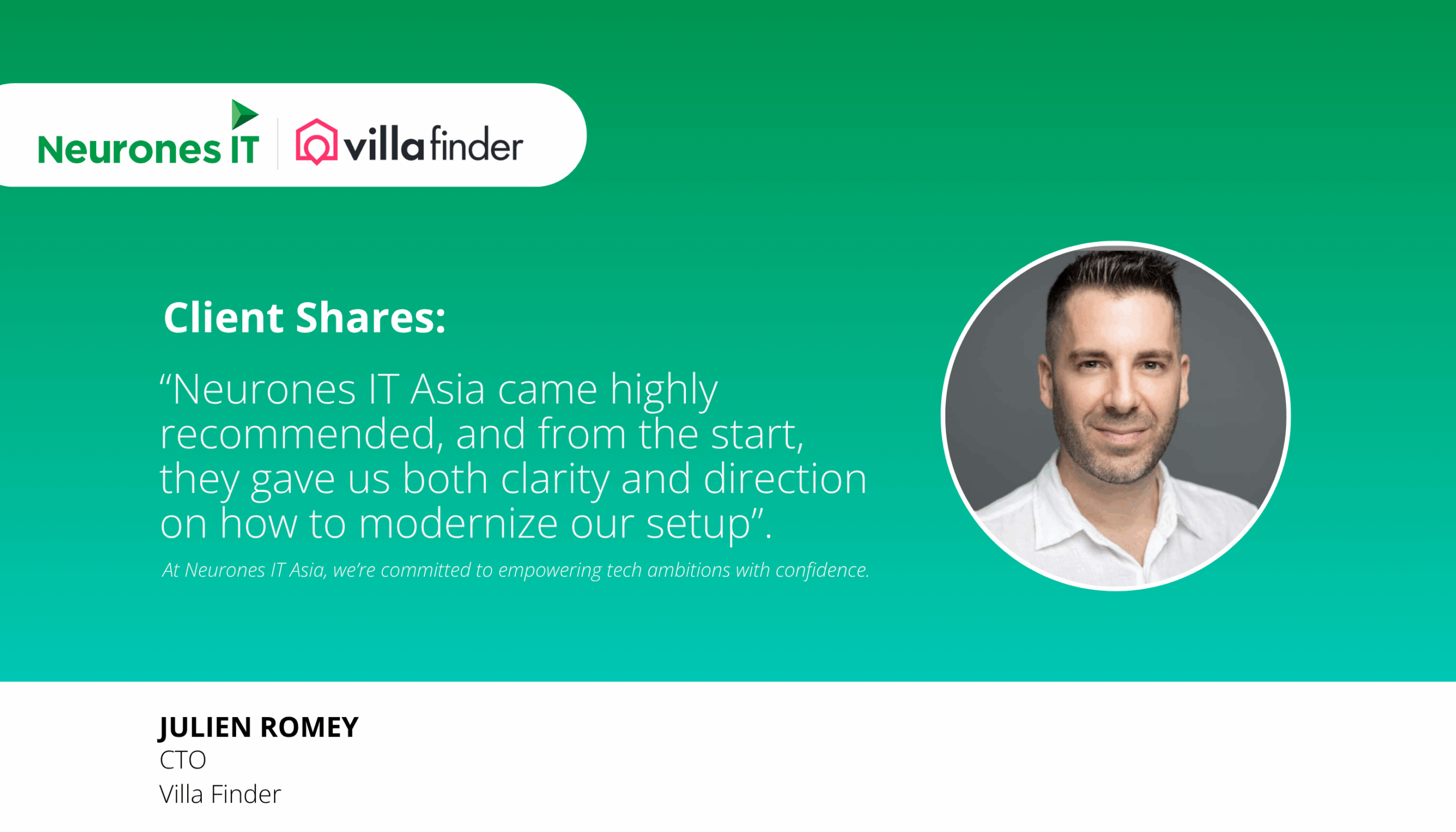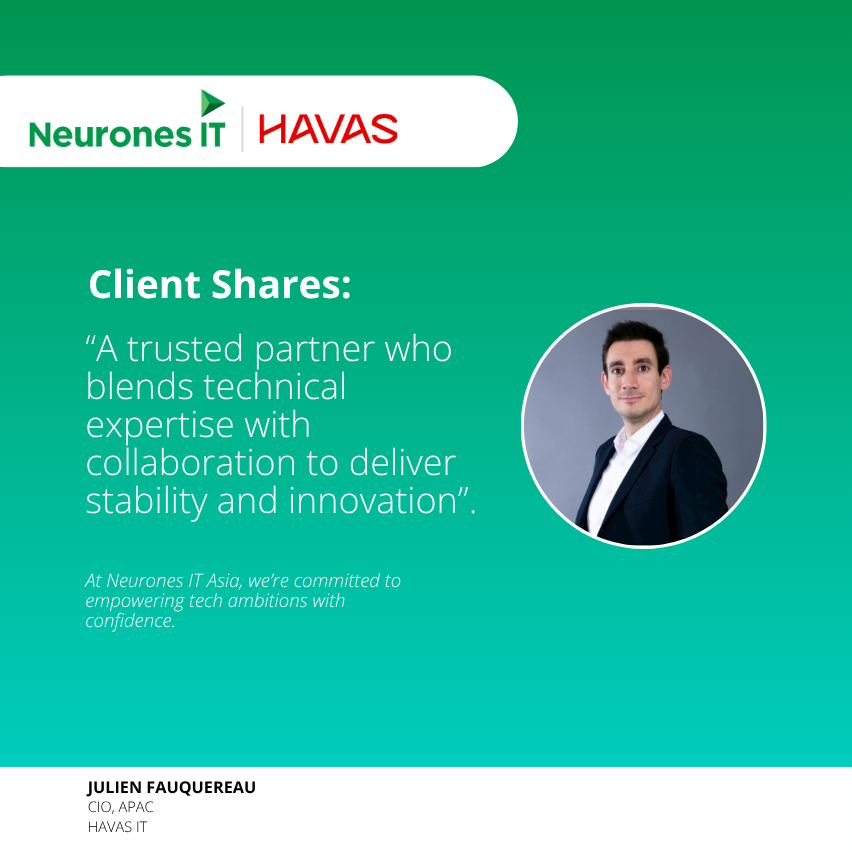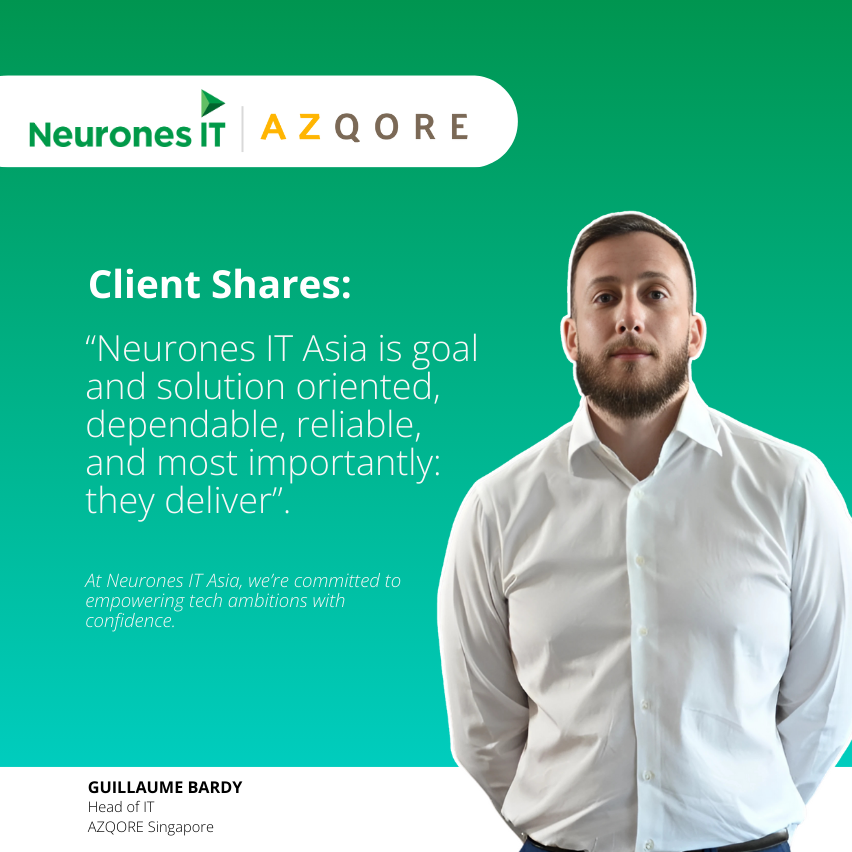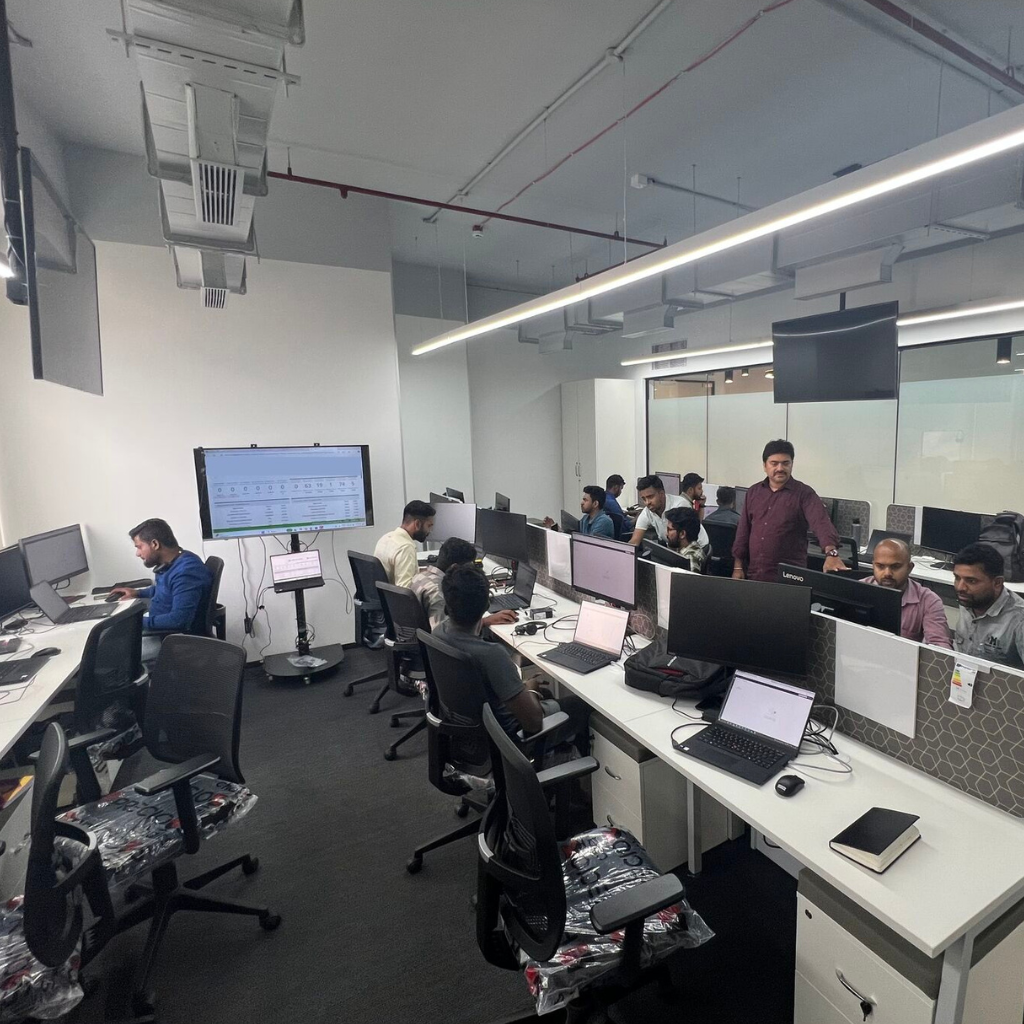Modernizing Frontend Architecture for Scale: A Conversation with Villa Finder and Neurones IT Asia

- November 17, 2025
When Villa Finder1 set out to modernize its platform, the goal was clear: build a frontend architecture that could scale with the business, accelerate development and support new digital experiences across regions.
In this feature, we speak with Julien Romey, CTO at Villa Finder, and Billy Bichon, Lead Developer and Solutions Architect at Neurones IT Asia, who share their perspectives on the project and journey toward a more scalable, and maintainable frontend architecture.
We begin with Julien’s perspective on the business challenges, followed by Billy’s view on how both teams collaborated to shape the solution.
Why Modernize? The Evolution Trigger
Julien:
“As our platforms expanded, our existing frontend became harder to maintain and evolve. We wanted a more modern and scalable setup that would simplify development and support future growth. That’s when we partnered with Neurones IT Asia to guide us in shaping the right approach.”
Before diving into the solution, we asked Billy to share his role in the project.
Billy:
“My role bridges technical strategy and execution, leveraging DevOps and IaC (Terraform, GitLab) to build scalable architectures. I also function as an Observability Engineer, deploying and maintaining the Grafana stack for critical system insights.”
What challenges did the team face, and how did Neurones IT Asia address them?
Julien:
“Our biggest challenge was maintainability. Over the years, our frontend has grown complex, and introducing new features was taking more effort. Neurones IT Asia quickly understood where we were struggling and advised us on how to move towards a cleaner, more scalable architecture. They also helped us start building reusable components and designing the infrastructure needed for the transition, which gave us a clear way forward.”
Billy:
“A key hurdle was refactoring a monolithic PHP backend that tightly coupled content logic with presentation. It made things tricky when we needed to serve location-specific content or multi-portal experiences flexibly. We solved this by decoupling the presentation layer entirely and moving to a component driven React architecture. Components are reused across sites while allowing content variation.
Using a Git monorepo and Terraform for IaC, we ensured scalable and automated deployment of the new frontend instances to the cloud.”
The goal was to give the client greater flexibility and global scalability, as the previous monolithic approach limited how easily they could deliver unique content to different regions and specialized portals. The result is a more maintainable setup. With React’s component model, we built a library of reusable UI elements, keeping the code base, managed via a Git monorepo, unified and easy to maintain. Terraform for IaC also ensured that infrastructure could be provisioned repeatably and efficiently across any cloud environment.
What made you decide to engage with Neurones IT Asia?
Julien:
“We reached a point where our frontend was slowing us down. Every change felt heavy, and it was clear we needed to rethink our approach if we wanted to keep growing. We weren’t just looking for extra capacity—we wanted experienced partners who could guide us. Neurones IT Asia came highly recommended, and from the start, they gave us both clarity and direction on how to modernize our setup.”
How did Neurones IT Asia add value to the project, and what impact has it created?
Julien:
“A lot of the value came from Billy’s support. He took the time to understand how our needs were evolving and shared practical advice from his experience. That gave us confidence to define a clearer roadmap for our frontend and begin shaping a setup that will be easier to maintain and scale. Even though the transition is still ongoing, we already feel more structured in our approach and more confident about the direction we’re taking.”
Billy:
“Operationally, it helped streamline workflows and remove the limitations of legacy deployment cycles in the monolith. Moving to a modern, decoupled React frontend streamlined the development process, allowing the client’s teams to rapidly roll out new features and location-specific sites without impacting the core platform. This decreased time-to-market for new business initiatives and significantly reduced future maintenance costs. By using IaC, we also established a robust, cloud-native deployment pipeline, ensuring high availability and scalability for their global audience.”
Would you recommend Neurones IT Asia?
Julien:
“Absolutely. They didn’t just come in to execute tasks—they acted as true partners, listening to our challenges and guiding us with solutions that made sense for our business. Having their expertise has given us peace of mind during this transition, and I would recommend them to any company looking for a reliable partner to navigate similar scalability and maintainability challenges.”
Billy:
“I agree. The client team was collaborative and willing to embrace a fundamental shift in architecture, which was key to adopting the monorepo and IaC approach.”
Key Takeaways
Billy:
“If there is one lesson, it is to prioritize observability early. While our final deployment included monitoring, integrating Grafana and defining OpenTelemetry standards from the start would have given deeper operational insights during the initial phases and further strengthened cross-team collaboration and future troubleshooting.”
About Villa Finder1: Villa Finder is Asia’s leading villa rental platform, helping travelers book curated villas with personalized concierge services across Asia and Europe.
Share this page
Related Articles
- All Posts
- Back
- Company Updates
- Events
- Partnership
- Customer Experience

Neurones IT Asia‘s experience and consultative approach made them the ideal choice to meet our hybrid infrastructure needs and support...

AZQORE has engaged Neurones IT Asia for IT Consulting services for almost five years. In our conversation with Guillaume Bardy,...

The expansion of Neurones IT India’s Bangalore office reflects our continued progress in building scalable delivery capabilities across Asia. What...
